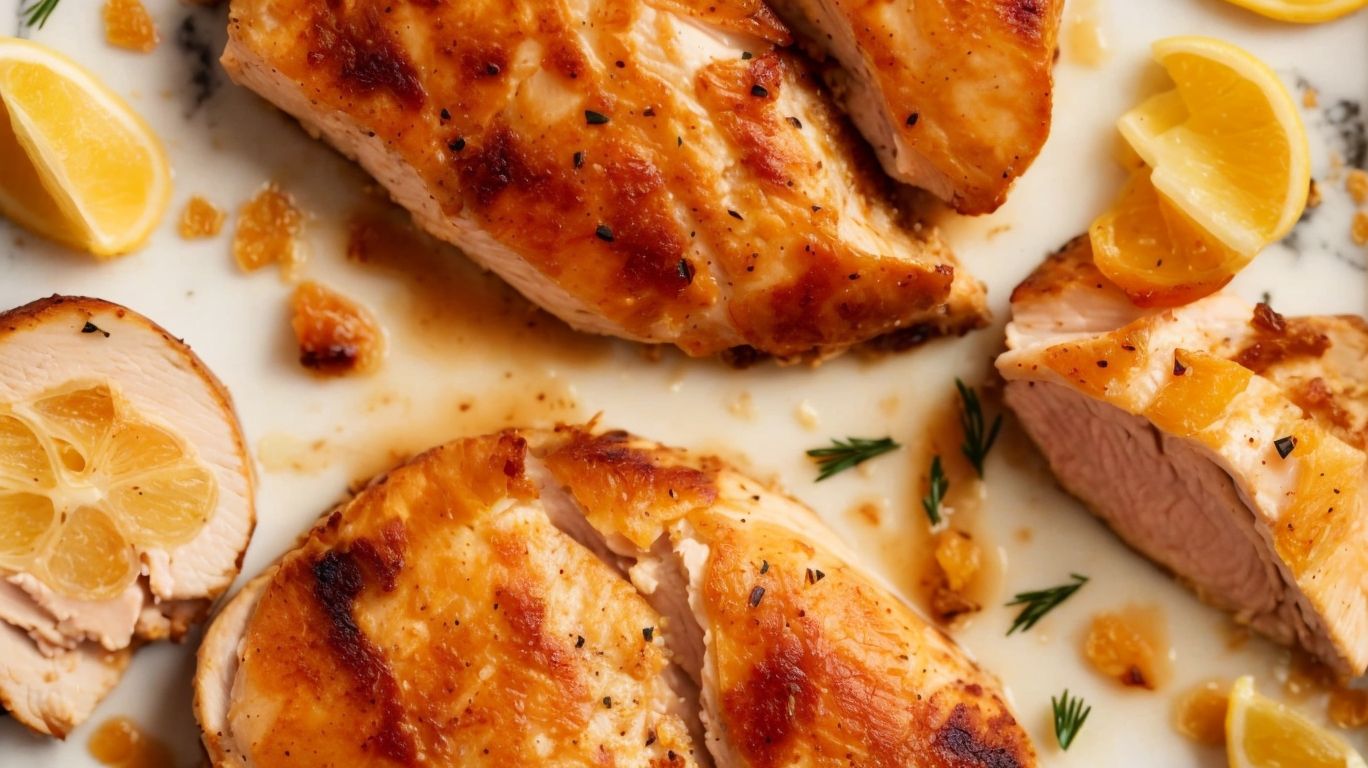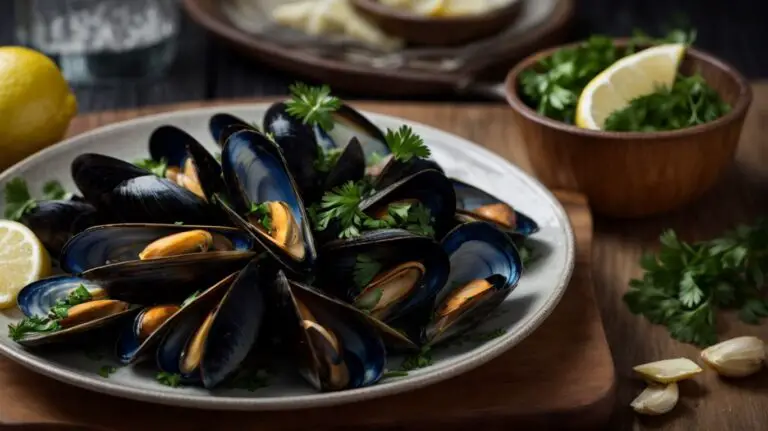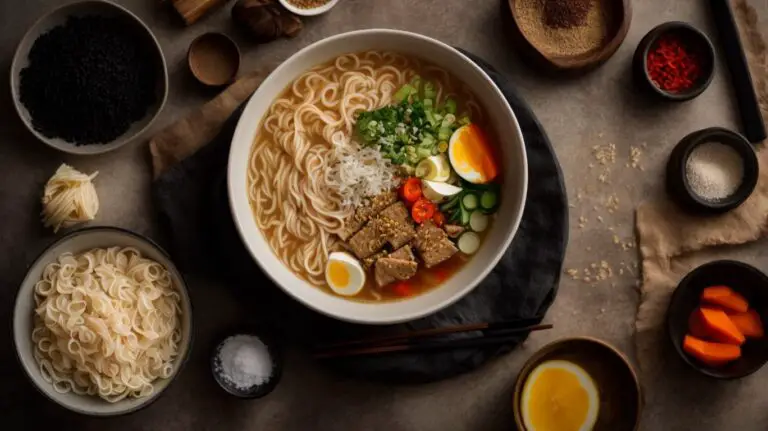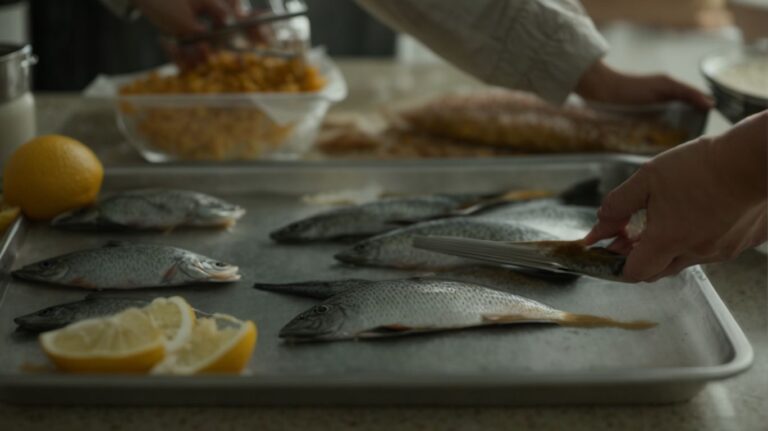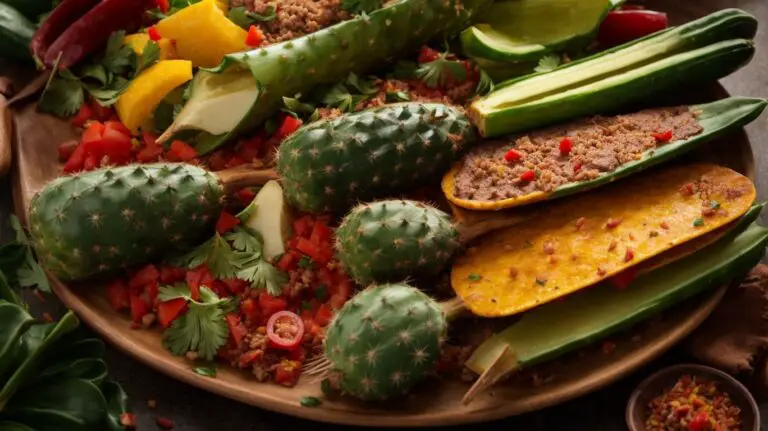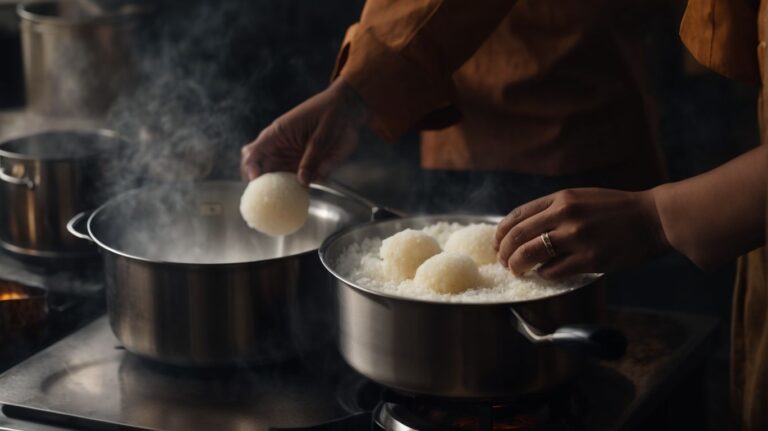How to Cook Chicken Breast Without Drying It Out?
Are you tired of dry, flavorless chicken breast?
In this article, we will explore the importance of cooking chicken breast properly to avoid the risks of undercooked meat.
We discuss different cooking methods, such as grilling and poaching, to achieve juicy and delicious chicken breast every time.
Learn how to prevent dryness by brining the chicken, using a meat thermometer, and resting the meat before cutting.
Follow these tips from an award-winning culinary blogger to cook the perfect chicken breast every time.
Key Takeaways:
Why is it Important to Cook Chicken Breast Properly?
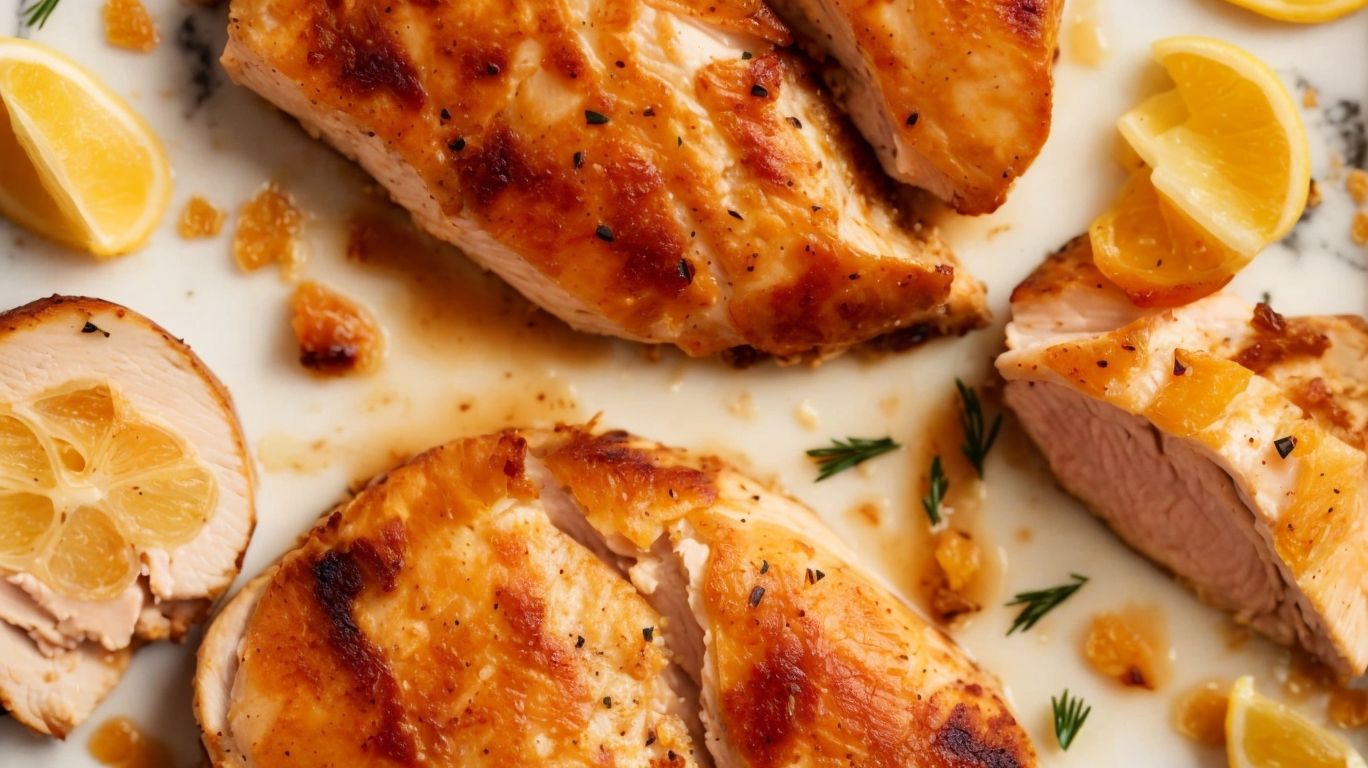
Credits: Poormet.Com – Vincent Wright
Cooking chicken breast properly is crucial for ensuring a safe and delicious meal that retains its juiciness and flavor.
Whether opting for a healthier baked option, the juicy tenderness of grilled chicken, or the quick sear of pan-frying, the right seasoning plays a vital role in elevating the dish to new heights.
Seasonings like paprika, garlic, parsley, salt, and black pepper not only add depth and complexity to the flavor profile but also help in retaining moisture during the cooking process. By mastering the art of seasoning, you can transform a simple chicken breast into a gourmet delight.
What are the Risks of Undercooked Chicken Breast?
Undercooked chicken breast poses significant risks to your health, including exposure to harmful bacteria like salmonella that can lead to food poisoning.
Consuming undercooked chicken can result in a range of health issues, from mild gastrointestinal discomfort to severe symptoms such as vomiting, diarrhea, fever, and abdominal cramps.
- One of the primary dangers is the potential spread of salmonella, a type of bacteria commonly found in poultry. Salmonella contamination can occur if chicken breast is not cooked to the recommended internal temperature of 165°F (74°C).
- To ensure the safety of your meals, use a food thermometer to check the doneness of chicken. Avoid relying solely on visual cues such as color.
- Properly cooking chicken breast not only eliminates harmful bacteria but also enhances its flavor and texture, providing a delicious and safe dining experience.
What Are The Different Ways to Cook Chicken Breast?
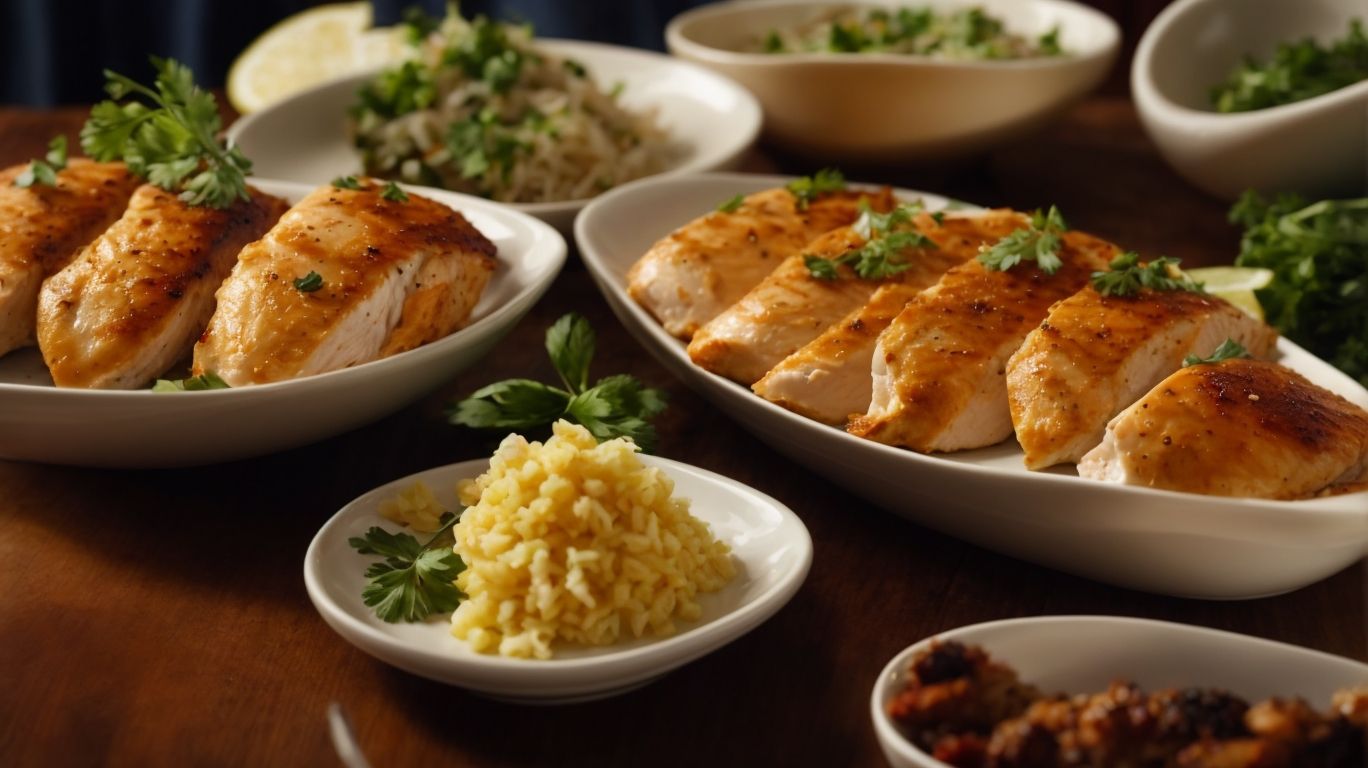
Credits: Poormet.Com – Jesse Adams
Chicken breast can be prepared in various delicious ways to suit different preferences – whether you prefer the charred flavor from grilling, the tenderness from baking, the crispiness from pan-frying, the subtlety from poaching, or the rich flavors from slow-cooking.
Grilling chicken breast not only imparts a smoky essence but also adds beautiful grill marks enhancing its visual appeal.
Baking chicken breast in the oven ensures a juicy and flavorful outcome, perfect for dishes like Stuffed Chicken Breast with spinach and feta.
Pan-frying yields a crispy golden exterior, making it a great choice for dishes like Chicken Marsala.
Poaching chicken breast involves gently simmering in flavored liquid, resulting in a delicate and moist texture.
Slow-cooking chicken breast with aromatic spices infuses the meat with deep, savory flavors, ideal for hearty stews or casseroles.
Grilling
Grilling chicken breast is a popular method that imparts a smoky flavor and crispy texture while keeping the meat juicy and tender.
When preparing for grilling, a key step is marinating the chicken breast to infuse it with flavor and help it stay moist during cooking. A simple marinade of olive oil, lemon juice, garlic, and herbs works wonders. Seasoning generously with salt, pepper, and any desired spices before grilling enhances the taste. Grill the chicken over medium-high heat, ensuring both sides cook evenly. The cooking time usually ranges from 6 to 8 minutes per side, depending on the thickness of the breast. Achieving those beautiful grill marks adds not only visual appeal but also depth of flavor.
Baking
Baking chicken breast in the oven is a convenient and foolproof method that allows for even cooking and retention of juices, resulting in a flavorful and tender dish.
When preparing chicken breast for baking, remember the importance of properly seasoning the meat. Rubbing a mixture of herbs and spices not only adds flavor but also helps in tenderizing the meat.
Consider marinating the chicken beforehand to enhance its taste and juiciness. To avoid the chicken becoming dry during baking, wrapping it in parchment paper creates a sealed environment that locks in moisture and infuses the flavors. This method also makes cleaning up a breeze.
So, next time you bake chicken breasts, try these tips for a more delicious and succulent outcome.
Pan-Frying
Pan-frying chicken breast in a skillet with olive oil or avocado oil creates a crispy exterior while locking in the juices for a flavorful and succulent dish.
-
For optimal results, start by seasoning the chicken breast with salt, pepper, and any other desired spices like paprika or garlic powder.
-
Heat the skillet over medium-high heat, add a drizzle of oil, then carefully place the seasoned chicken breast in the hot pan.
-
Cook each side for about 6-8 minutes, ensuring a golden-brown crust forms while keeping the inside tender and moist.
-
Once fully cooked, let the chicken rest for a few minutes before slicing and serving to preserve its juiciness.
Poaching
Poaching chicken breast in a seasoned broth or liquid helps retain its natural juices and flavors, resulting in a tender and moist final product.
When poaching chicken breast, it is important to bring the poaching liquid to a gentle simmer before adding the chicken. This gentle cooking process ensures that the protein in the chicken does not cook too quickly, which can result in dry and tough meat.
For the poaching liquid, you can use a combination of broth, water, and aromatics such as garlic, onion, and herbs. Adding a splash of white wine or a squeeze of lemon juice can also enhance the flavor of the chicken.
Feel free to experiment with different seasonings like peppercorns, bay leaves, or thyme to infuse the chicken with additional depth of flavor. The key is to keep the poaching liquid well-seasoned but not overpowering, so the natural taste of the chicken can shine through.
Slow-Cooking
Slow-cooking chicken breast allows the meat to tenderize slowly, absorbing the flavors of the seasonings and spices while preventing it from drying out.
When opting for the slow-cooking method, it is essential to choose spices and seasonings that complement the natural flavors of chicken. A blend of herbs like rosemary, thyme, and oregano can work wonders in enhancing the taste profile. Incorporating a hint of smoked paprika or cumin can add depth to the dish without overwhelming the mild chicken flavor. To further enhance juiciness, consider adding a splash of citrus juice or a drizzle of olive oil to keep the meat moist throughout the cooking process.
How to Cook Chicken Breast Without Drying It Out?
Cooking chicken breast without drying it out involves techniques like brining, using a meat thermometer, pounding to even thickness, cooking at the right temperature, and allowing the meat to rest before cutting to lock in juices.
Brining the chicken breast before cooking can provide moisture and flavor. This involves soaking the meat in a mixture of water, salt, and sometimes sugar. This process not only adds seasoning but also helps the chicken retain moisture throughout the cooking process.
Using a meat thermometer to monitor the internal temperature is crucial. Cook the chicken until it reaches an internal temperature of 165°F (74°C) to ensure that it is safe to eat without overcooking. Tenderizing the chicken by pounding it to an even thickness can promote even cooking, preventing dry spots.
Cooking at the right temperature is key. High heat can cause the chicken to dry out quickly, so opt for a moderate heat setting to cook the chicken evenly. Once the chicken is cooked, allow it to rest for a few minutes before slicing. Resting lets the juices redistribute within the meat, ensuring a juicy and flavorful bite. By following these steps, you can enjoy tender, juicy chicken breast every time.”
Brine the Chicken Breast
Brining chicken breast in a saltwater solution infused with herbs and spices adds moisture and flavor to the meat, resulting in juicy and well-seasoned dishes.
When chicken breast is brined, the saltwater solution helps the meat retain moisture during the cooking process, preventing it from drying out, especially when using high-heat cooking methods like grilling or roasting. The herbs and spices used in the brine penetrate the meat, enhancing its flavor profile from within.
Creating the perfect brine solution involves dissolving salt in water, typically at a ratio of 1 cup of salt per gallon of water, and then adding complementary seasonings like peppercorns, garlic, citrus zest, or fresh herbs for additional layers of taste.
Use a Meat Thermometer
Utilizing a meat thermometer to check the internal temperature of chicken breast ensures that it is cooked thoroughly without overdoing it, resulting in juicy and safe-to-eat meat.
For baking chicken breast, preheat the oven to 375°F (190°C) and roast until the thermometer reads 165°F (74°C). This will lock in the juices and produce tender meat. If grilling, heat the grill to medium-high and cook until the thermometer registers 165°F (74°C), ensuring a smoky flavor with perfect doneness.
Remember, poultry should reach an internal temperature of 165°F (74°C) to be safe to consume, so investing in a quality meat thermometer is crucial for impeccable results.
Pound the Chicken Breast
Pounding chicken breast to an even thickness helps tenderize the meat, promotes uniform cooking, and prevents dryness by ensuring all parts cook at the same rate.
To achieve this, place the chicken breast between two sheets of plastic wrap or parchment paper to avoid any mess. Using a meat mallet, start pounding from the center and work your way outwards to ensure even thickness. You can create small incisions on the thicker parts of the breast to level it out further. Consistent thickness not only ensures that the chicken cooks evenly but also allows it to absorb flavors more effectively during marination.
Cook at the Right Temperature
Cooking chicken breast at the correct temperature, whether baking, grilling, or pan-frying, ensures that the meat cooks evenly and retains its juiciness for a flavorful outcome.
When baking chicken breast, it is recommended to preheat the oven to 400°F (200°C) . This temperature allows for a golden-brown crust to form while keeping the inside tender and succulent.
Grilling chicken breast over medium heat, around 350-375°F (175-190°C) , helps seal in the juices and gives the meat those desirable grill marks.
For pan-frying, heat your skillet over medium-high heat to achieve the ideal 375°F (190°C) , ensuring a perfectly seared exterior without drying out the chicken.
Rest the Chicken Breast Before Cutting
Allowing chicken breast to rest after cooking enables the juices to redistribute within the meat, enhancing flavors and ensuring that the dish remains juicy when served.
This crucial step also helps in achieving a more tender and succulent texture, making each bite a delightful experience. The ideal duration for letting the chicken breast rest typically ranges from 5 to 10 minutes depending on the cooking method used. During this resting period, the residual heat continues to gently cook the meat while the juices settle back into the fibers, resulting in a more evenly flavored and moist end product. Therefore, while it may be tempting to cut into the chicken breast immediately, patience is key to savoring a perfectly cooked and flavorsome dish.
What Are Some Tips for Cooking Juicy Chicken Breast?
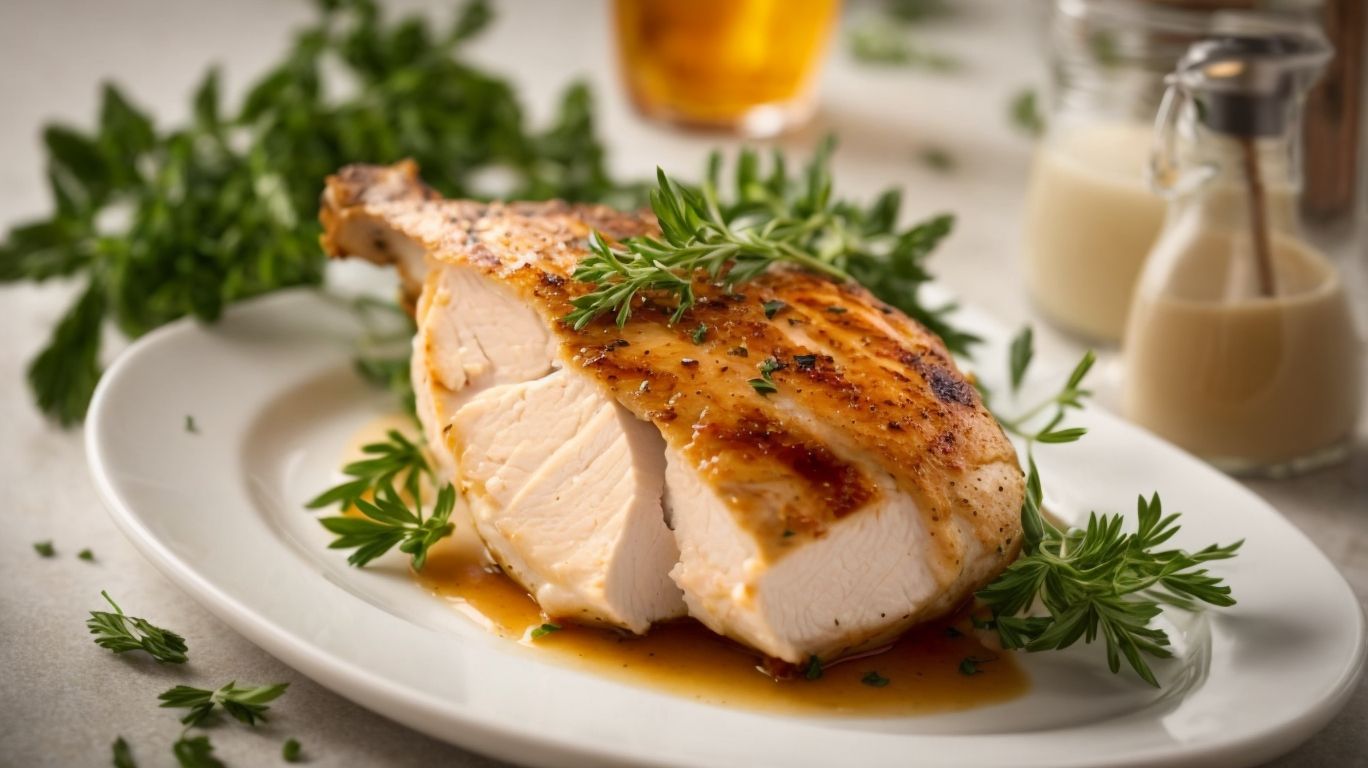
Credits: Poormet.Com – Ronald Harris
Achieving juicy chicken breast involves marinating the meat, using cooking oil with a high smoke point, tenderizing, cooking on low heat, and adding liquid to the pan for moisture retention.
To start with, marination is a crucial step when it comes to preparing juicy chicken breasts. It not only imparts flavor but also helps in tenderizing the meat, making it more succulent. Opt for ingredients like yogurt, citrus juices, herbs, or vinegar based marinades for best results.
When selecting cooking oil, go for options like avocado oil or grapeseed oil that have high smoke points to prevent burning and retain moisture. Remember to tenderize the chicken using a meat mallet before cooking to ensure even thickness.
Marinate the Chicken Breast
Marinating chicken breast in a flavorful mixture of spices, herbs, and liquid ingredients enhances its juiciness and infuses it with delicious flavors.
One of the key benefits of marinating chicken breast is the way it tenderizes the meat, making it more succulent and enjoyable to eat. The process also helps in locking in the moisture, preventing the chicken from drying out during cooking.
In terms of spice blends, options are endless – from classic blends like Italian seasoning and Cajun spice to more exotic choices like curry powder or za’atar. Herbs such as rosemary, thyme, and cilantro can add a fresh and aromatic touch to the marinade.
For liquid ingredients, you can opt for acidic options like citrus juice, vinegar, or yogurt-based marinades. Each of these brings its own unique flavor profile and helps in breaking down the protein fibers in the chicken, resulting in a more tender texture.
Use a Cooking Oil with High Smoke Point
Opting for cooking oils with high smoke points like avocado oil or olive oil when preparing chicken breast through pan-frying helps maintain juiciness and prevent the oil from burning.
These oils are ideal for cooking at high temperatures without breaking down, ensuring a perfectly seared exterior while keeping the inside tender and juicy. Avocado oil, with its high smoke point of around 520°F, creates a delicious crust on the chicken without imparting any unwanted flavors.
Similarly, olive oil provides a rich flavor profile to the chicken breast while helping it retain moisture throughout the cooking process. Its smoke point of approximately 390°F makes it suitable for pan-frying without the risk of burning, making it a popular choice among home cooks.
Use a Meat Tenderizer
Using a meat tenderizer on chicken breast helps break down muscle fibers, making the meat more tender and allowing it to absorb seasonings and flavors effectively for a juicy outcome.
Meat tenderizers come in various forms, including mechanical tools like mallets or blades, as well as natural tenderizing agents such as enzymes or acidic marinades. While physical tenderizers mechanically soften the meat, enzymatic tenderizers like papaya or kiwi extracts work by breaking down proteins. On the other hand, acidic marinades, often containing ingredients like vinegar or citrus juices, help in tenderizing and infusing a tangy zing. Each type offers a unique way to enhance the texture and taste of chicken breast, depending on personal preference and desired flavor profile.
Cook on Low Heat
Cooking chicken breast on low heat helps retain moisture, prevents the meat from drying out, and allows the flavors to develop gradually for a more succulent and flavorful dish.
When you slow-cook chicken breast, the gentle heat tenderizes the meat, resulting in a juicy and tender texture. This method also helps you avoid the risk of overcooking, keeping the chicken flavorful and moist throughout.
By cooking chicken breast on low heat, you have better control over the cooking process, ensuring that the meat is cooked evenly and thoroughly without losing its natural juices. This technique is particularly beneficial for beginner cooks, as it reduces the chances of ending up with tough and dry chicken.
Add a Liquid to the Pan
Incorporating a liquid like broth, wine, or sauce into the pan when cooking chicken breast helps maintain moisture levels, infuse flavors, and prevent the meat from drying out.
Broth, such as chicken or vegetable broth, not only adds depth to the dish but also keeps the chicken tender and succulent. The acidity in wine acts as a tenderizer, breaking down proteins and adding complexity to the taste profile. Sauces like teriyaki or barbecue can create a caramelized glaze, locking in juices and creating a delicious coating on the chicken.
These liquids provide a versatile foundation for flavor experimentation. They also offer a buffer against overcooking, allowing for a more forgiving margin of error in achieving the desired doneness.

